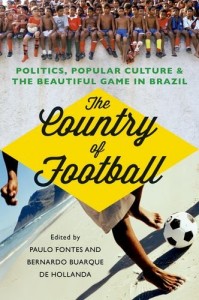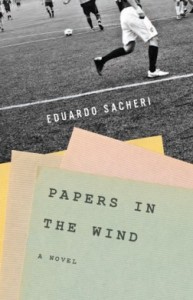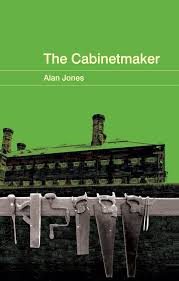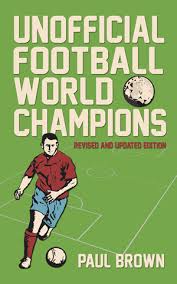Book Review: Neymar: My Story – Conversations with my father. Neymar Jr and Neymar Sr with Ivan More
 This book is released as ‘the official autobiography’ of Neymar Junior and is the English translation of the version published in Brazil in 2013.
This book is released as ‘the official autobiography’ of Neymar Junior and is the English translation of the version published in Brazil in 2013.
The term ‘official’ can be be a good thing and also be less so. On the positive side it is used so that those buying officially authorised products know they are of a certain quality, that they have been sanctioned for release and that there is no financial gain for those producing pirate goods. What it can also mean though, is that there is a great deal of control over what is produced and in the instance of a book, can compromise the content in that it can become very sanitised.
This book in terms of format is 150 pages long and consists of 30 small chapters. These alternate between Neymar Junior and Neymar Senior focusing on a specific theme and a style and tone that attempts to reflect a conversational answer to a question.
As readers we learn that Neymar Senior also played football professionally in Brazil, although not at a level achieved by his son and has for a number of years managed the affairs of the current Brazilian No. 10. As you would expect Neymar Senior expresses his love for his son and the pride he has for what Juninho (Neymar Junior’s family nickname) has achieved. Neymar Senior also covers such areas as family life, Neymar Junior’s progression into the ranks at Santos and subsequently playing on the international stage with Brazil, as well as the aborted transfer to Real Madrid.
In his chapters Neymar Junior talks about the positive influence of his family and especially his father and in addition, how he feels now that his is a father. Juninho like his father talks about his career to date and the highs and lows he has experienced since making his professional debut as a 17 year old including his recent move to Barcelona. He expresses his pride in playing for Brazil and how that nothing less than winning the World Cup in 2014 will be good enough for the Brazilian public.
On the one hand there is a warmth to the personal insight that the two men provide in terms of their relationship and if you know nothing of Neymar (Senior and Junior) this book provides a useful introduction. However, because the chapters are so brief there is the feeling that topics are not fully explored. There is the impression too – and this comes back to the idea of ‘official’ being constraining or sanitising – that as a reader I was left with the feeling that it was all a bit ‘nice’ and lacked a bit of an edge.
 As a Fulham fan of over forty years I’ve seen my team in all four division, the FA Cup, the League Cup, in Europe and even the Preliminary Round of the Leyland DAF Cup, so I think I can safely call myself a supporter who has ‘done a few miles’. However, I’m a pure novice when it comes to Ipswich Town fan Graeme Brooke who back in 2002 chalked up his 1,000th game against arch-rivals Norwich City and was voted ‘Super-fan’ by the Town, players, manager, directors and fellow supporters.
As a Fulham fan of over forty years I’ve seen my team in all four division, the FA Cup, the League Cup, in Europe and even the Preliminary Round of the Leyland DAF Cup, so I think I can safely call myself a supporter who has ‘done a few miles’. However, I’m a pure novice when it comes to Ipswich Town fan Graeme Brooke who back in 2002 chalked up his 1,000th game against arch-rivals Norwich City and was voted ‘Super-fan’ by the Town, players, manager, directors and fellow supporters. When many people think of Brazil, they conjure up images of a joyful mix of football, samba, carnival and beaches and therefore maybe puzzled by the demonstrations that have occurred in the preparation and build-up to the World Cup. The reality is that Brazil is a complicated country which as the introduction to The Country of Football says, “…stems from its explosive growth, and the struggles to adapt economics, social and political institutions to the new realities of the country…”.
When many people think of Brazil, they conjure up images of a joyful mix of football, samba, carnival and beaches and therefore maybe puzzled by the demonstrations that have occurred in the preparation and build-up to the World Cup. The reality is that Brazil is a complicated country which as the introduction to The Country of Football says, “…stems from its explosive growth, and the struggles to adapt economics, social and political institutions to the new realities of the country…”. When I think about Argentinian football there is one standout memory and that is the 1978 World Cup. As a football mad sixteen year old, I can remember staying up into the early hours to watch the games from South America. One of the most memorable images came in the Final when the host nation played the Netherlands. With the entrance of the teams onto the pitch in Buenos Aires, the stadium sky became filled with blue and white tickertape. The volume of the streamers was such that it adorned the pitch throughout the Final as Argentina overcame the Dutch 3-1 after extra time.
When I think about Argentinian football there is one standout memory and that is the 1978 World Cup. As a football mad sixteen year old, I can remember staying up into the early hours to watch the games from South America. One of the most memorable images came in the Final when the host nation played the Netherlands. With the entrance of the teams onto the pitch in Buenos Aires, the stadium sky became filled with blue and white tickertape. The volume of the streamers was such that it adorned the pitch throughout the Final as Argentina overcame the Dutch 3-1 after extra time. This crime novel, set in and around the Glasgow area, begins and ends on Sunday 29th April 2008. In between, retired Detective John McDaid takes the reader back 30 years and to the day after the brutal murder of student Patrick Hare.
This crime novel, set in and around the Glasgow area, begins and ends on Sunday 29th April 2008. In between, retired Detective John McDaid takes the reader back 30 years and to the day after the brutal murder of student Patrick Hare. In A Football Education by Michael Oates, the author attempts a different approach to detailing his life supporting his team – in this case Sunderland AFC. The key word associated with his slant is ‘education’, as Oates “documents his own experiences…from childhood memories, early heroes, match days, even a trip back in time to the birth of football in late Victorian England, right through to the present day and beyond.”
In A Football Education by Michael Oates, the author attempts a different approach to detailing his life supporting his team – in this case Sunderland AFC. The key word associated with his slant is ‘education’, as Oates “documents his own experiences…from childhood memories, early heroes, match days, even a trip back in time to the birth of football in late Victorian England, right through to the present day and beyond.” However, that then leads to the supplementary question of, how do teams become UFWC? Well there is a logical answer. All football fans know that the FIFA World Cup first held in 1930 and every four years since (except 1942 and 1946 due to the Second World War), produces the ‘official’ World Champions. What author Paul Brown came up with was an alternative notion where, “football’s world champions were decided via a continuous series of title matches stretching back to the very first international football match”.
However, that then leads to the supplementary question of, how do teams become UFWC? Well there is a logical answer. All football fans know that the FIFA World Cup first held in 1930 and every four years since (except 1942 and 1946 due to the Second World War), produces the ‘official’ World Champions. What author Paul Brown came up with was an alternative notion where, “football’s world champions were decided via a continuous series of title matches stretching back to the very first international football match”. This is the third instalment in the series following on from,
This is the third instalment in the series following on from,  Every four years sixteen European nations compete for the Henri Delaunay (European Championship) trophy. During the summer of 2012, photographer George Nelson set out to visit a number of London venues, (bars, restaurants, clubs and churches), screening Euro 2012 matches. His aim was to ‘follow’ every team with its London residing supporters and capture each experience in pictures.
Every four years sixteen European nations compete for the Henri Delaunay (European Championship) trophy. During the summer of 2012, photographer George Nelson set out to visit a number of London venues, (bars, restaurants, clubs and churches), screening Euro 2012 matches. His aim was to ‘follow’ every team with its London residing supporters and capture each experience in pictures.